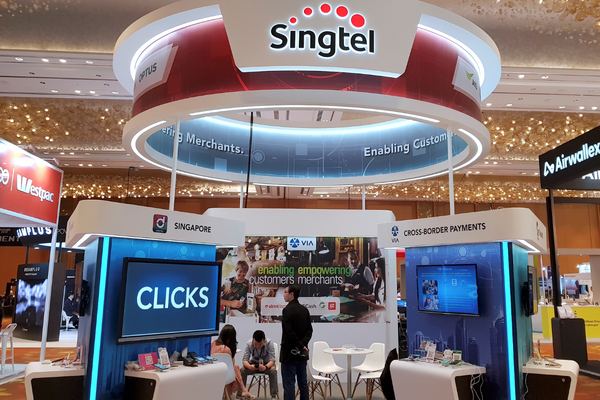Understanding the future state of technology
Sponsored by Clarivate
Each February, ClarivateTM publishes its list of the Top 100 Global InnovatorsTM, identifying the companies and institutions pushing the boundaries of human technical development the furthest.
Based on direct measures of global invention data, the list opens a window on the role of innovation data in underpinning research strategy formation, risk measurement and developmental direction.
It also shines a light on how intelligence can be used to understand what the next phase of technical development is likely to be, and the dynamics, industries, organisations and research fronts involved.
Business leaders understand the role of patents as a shield, a way of protecting investments in research and the creation of an asset that can be used. Less are aware that inherent to patents being valid are requirements for an application to teach others how to use it; meaning global inventive information contains massive technical detail.
And there is a lot of this detail: more than 57 million individual inventions, each containing information that has not appeared in public before it was laid out in a patent application. What happens when you measure, score and analyse 58 million public technical documents describing the otherwise private R&D activities of the world? Intelligence appears.
We can measure the influence and impact an idea is having in the market by its reference footprint in the ideas of others. We can measure the importance of an invention to the applicant by its geographic footprint – strongly correlated to costs. It can be classified into what the invention is, what it is for and even why it has been invented. And we can add all of that together across thousands or millions of inventions to visualise the development curve and its current shape, and see the patterns, links and signals. Signals that indicate direction – where technology is headed.
From tactical today to strategic tomorrow
Corporations that innovate are also exposed to technical risk from the innovation of others. Therefore they need to be able to manage those processes. They have intellectual property (IP) experts that collaborate daily with research and development (R&D) teams to supervise ideation risk and react or change their plans if needed.
A great example of that occurs at Dow, a major US chemical company and 12-time Clarivate Top 100 Global Innovator. “Patent data is critical to modern research project success. What it provides is line-of-sight to the inventive space,” says Scott Matteucci, a Principal Research Scientist at Dow. “Running a project that is heavily informed by patent intelligence significantly reduces its vulnerability to reproducing something already invented elsewhere.”
That level of tactical usage – checking for whether the same idea is already in flight – pays dividends on every project it informs. And such tactical support, where patent data, research papers information and more are brought together for a more holistic innovation information data suite, is increasing.
Yet these data sources require knowledge to use. Scott explains, “Every component of patent data is complex. From how to search it, what a patent claim is, how to analyse a claim, on top of the technical knowledge required – it requires a specific set of skills.”
This is where teams that already exist inside corporations can begin working together, and where the talents of data scientists and engineers have a role to play. The knowledge inside R&D and IP, combined with data science departments and business intelligence units, can stretch the power of innovation data to add hidden insight, built on the knowledge activities of scientists and engineers everywhere. This results in a virtual (yet increasingly actual) team focused on research and innovation intelligence.
For Scott, this has huge benefits: “Analysis of the technology landscape is super important when making research investment decisions. We don’t want to spend our time and resources on projects that have little or no chance to add value for Dow, or worse, are already protected by someone else.”
The power of innovation intelligence
Understanding the current development curve in your industry or technology tells you whether further research will add significant value or merely iterative improvement. It can tell you how you benchmark versus your peers and versus the entire research community globally. It can unveil where the gaps are – the areas of development your teams are thinking about improving, but which are not yet areas of growth.
Scott says this is one of the most important components: “Mapping our ideas to innovation data allows us to know whether the market needs technical solutions, and where that white space is. It gives us visibility into the current development speed and the expected timing for potential returns on investment. That in turn allows us to understand what we should expect from our research programs.”
With 3.5 million new ideas being patented each year, risk is rising, and exposure to being behind the curve becoming more likely. Understanding the current state of human technical knowledge, and more importantly, having a detailed understanding of the patterns at the edges, gives you an advantage. You know where it is headed, and what you would be best placed to add.
Gretchen Baier, Research Strategy and Communications Leader at Dow, says, “It is so important to have dedicated resources analyse the innovation ecosystem, and that they have expertise in both the technology space and intellectual property. The outputs help us optimise research towards the most impactful projects, both technically and financially. The development cycle of new materials can be very long and can involve large capital investments, so it is very important to have as clear a path as possible to commercialisation and practice.”
The future state of technology does not have to rely on guesswork, or the complex addition of fragmented knowledge of thousands of experts, but can be simplified, distilled, understood and then used to transform how you make critical decisions.
Explore the power of innovation intelligence within the Clarivate Top 100 Global Innovators report.
By Ed White, VP and Principal Analyst, Clarivate
Contributors: Gretchen Baier (Strategy and Communications, Dow) and Scott Matteucci (Principal Research Scientist, Dow)

Business Reporter Team
Most Viewed
Winston House, 3rd Floor, Units 306-309, 2-4 Dollis Park, London, N3 1HF
23-29 Hendon Lane, London, N3 1RT
020 8349 4363
© 2025, Lyonsdown Limited. Business Reporter® is a registered trademark of Lyonsdown Ltd. VAT registration number: 830519543





